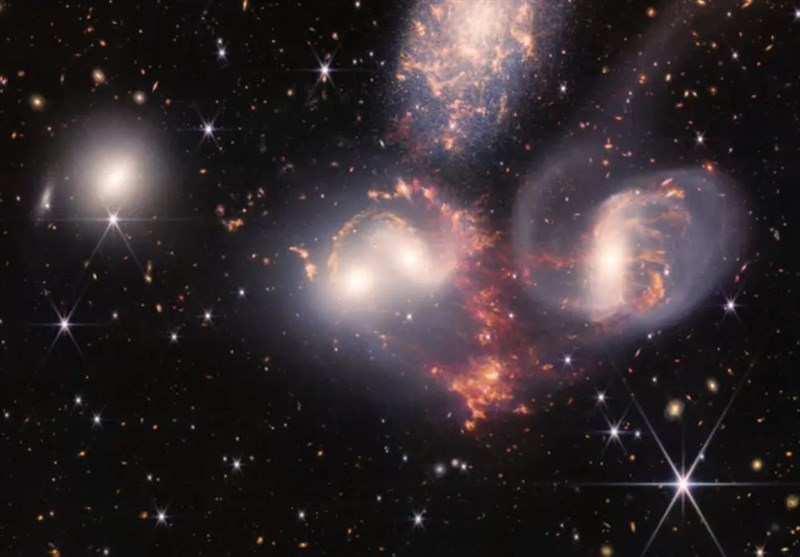Galactic Collision at 2 Million mph Offers Glimpse Into Earth's Potential Fate
TEHRAN (Tasnim) - Astronomers have captured the high-speed collision of two galaxies, providing insights into a cosmic event that mirrors scenarios for the distant future of our Milky Way.
An international team of scientists has observed a dramatic collision between two galaxies 290 million light-years away, offering a glimpse into the dynamics of such cataclysmic events.
The collision involved galaxy NGC 7318b barreling toward another at a staggering 2 million mph (3.2 million km/h), driven by immense gravitational forces.
"This high-speed collision is causing havoc in NGC 7318b, particularly with respect to its reserves of hydrogen gas, which are being stripped off," researchers noted.
Hydrogen, crucial for star formation, is being disrupted, likely slowing the galaxy's ability to generate new stars.
The event was detected using cutting-edge equipment, including the £16.7 million William Herschel Telescope Enhanced Area Velocity Explorer (WEAVE) in Spain and the Low-Frequency Array (LOFAR) radio telescope in the Netherlands.
The collision unfolded within Stephan’s Quintet, a group of five galaxies: NGC 7317, NGC 7318a, NGC 7318b, NGC 7319, and NGC 7320.
"NGC 7318b is coming into the galaxy group from behind and colliding with NGC 7318a," explained Professor Gavin Dalton of the University of Oxford, who leads the WEAVE project.
The light from this cosmic crash has traveled 285 million years to reach Earth, meaning astronomers are observing events from that period.
The violent encounter, which likely lasted about 10,000 years, released immense energy, creating a powerful shockwave similar to a sonic boom.
"The shock is powerful enough to rip electrons from atoms, leaving a glowing trail of charged gas," said lead researcher Dr. Marina Arnaudova of the University of Hertfordshire.
However, when the shockwave moves through surrounding hot gas, it weakens, compressing the gas and emitting radio waves detectable by telescopes like LOFAR.
The findings, published in the Monthly Notices of the Royal Astronomical Society, provide a preview of what might happen if the Milky Way collides with the Andromeda galaxy in about 10 billion years.
While astronomers estimate a 50% chance of such a collision, the event would likely reshape both galaxies into a new superstructure dubbed "Milkdromeda."
Planets and stars could be flung into new orbits, with a small possibility of Earth facing catastrophic changes.
"Even a close pass with another star could alter Earth's orbit, which might lead to freezing or intense heating," said Eric Bell, professor of astronomy at the University of Michigan.
Despite these theoretical risks, astronomers emphasize that Earth's greater threats lie in the sun’s evolution, which will destabilize long before any galactic collision.
The WEAVE project, funded by the UK’s Science and Technology Facilities Council and contributions from other European nations, has opened new frontiers in mapping the universe.
"The details of this collision and the insights from Stephan's Quintet are just a taste of what's to come," said Professor Dalton.





